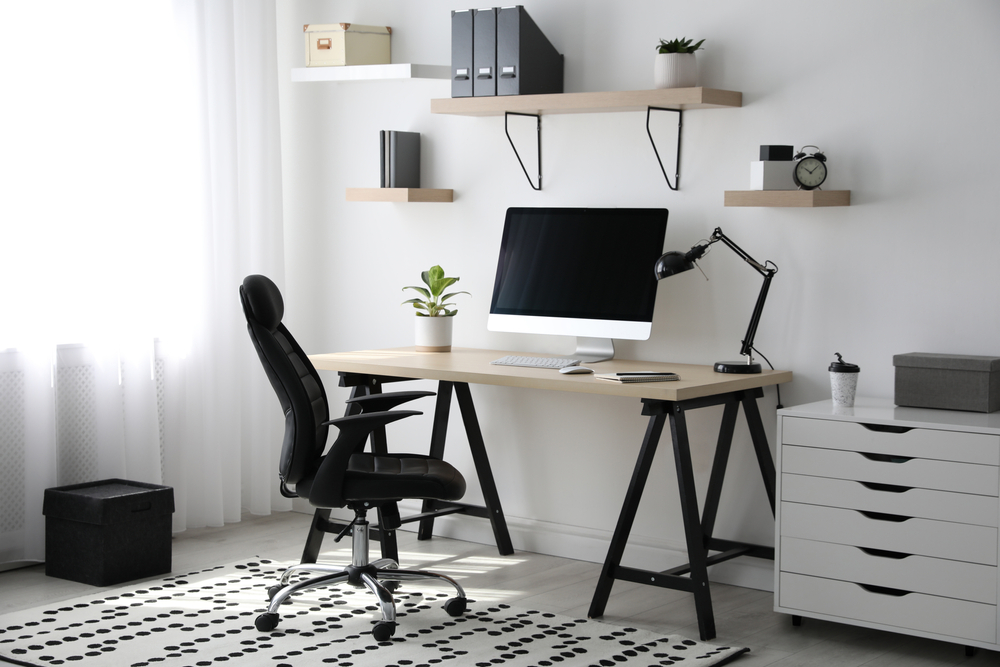Fourteen Home Office Essentials For Anyone Working Remotely For The First Time

Transitioning from office settings to remote work brings new challenges in creating an efficient, professional workspace at home. Thoughtfully designing your home office and adopting key tools tailored to remote work will set you up for success. Use this guide to optimize your new remote work habitat.
Set Up Your Computer And Core Office Hardware
A quality laptop or desktop computer with sufficient processing power and storage is fundamental. Add a wireless all-in-one printer/scanner/copier to print and digitize documents. Utilize a strong Wi-Fi router and a speedy internet connection to avoid glitchy video calls. Purchase noise-cancelling headphones to minimize distractions.
Choose The Right Room And Layout
Pick a quiet, dedicated area for work away from regular household disruptions. Make sure there is strong lighting. Seasonal Affective Disorder is a real issue for a lot of people, so think about putting in a SAD lamp. Organize your desk, chair, and computer equipment ergonomically to avoid strain. Leave open floor space, if possible, for moving around during video meetings. Invest in a spacious desk providing ample surface area.
Set Rules With Family Members About Privacy
To maintain productivity, set expectations that family members should avoid interrupting during working hours except for emergencies. Use room dividers and close doors when possible and hang a ‘do not disturb' sign when privacy is needed. Noise-cancelling headphones also help minimize household distractions.
Add A Secondary Monitor
Increase productivity by connecting a monitor identical to or larger than your primary laptop screen. This dual monitor setup lets you reference multiple windows and documents simultaneously. Position the monitors at eye level and arm's length for comfortable head movement between screens. This flexibility is a game-changer.
Install Key Software And Enable Collaboration Features
Ensure your computer has the full Microsoft Office Suite, VPN client if needed, video conferencing apps like Zoom, and collaboration tools like Slack, Teams, or Asana. Enable built-in collaboration features across tools to centralize working and communicating. Update any software needing licenses.
Back-Up Your Data
Purchase an external hard drive and set periodic automatic backups to protect critical remote work files from device failures. Alternatively, leverage secure cloud storage like Dropbox which also syncs files across multiple devices. Lost documents and deliverables are nightmares when working independently.
Add Personal Touches
Introduce indoor plants, framed photos, artwork, warm lighting, and other decorative elements making your workspace inspiring. Working from a dull, sterile room is draining long-term. The ambiance of your environment substantially impacts motivation and mood, so personalize it fully. Even if it’s a workspace, you still want it to feel like it’s yours. Custom neon signs can be just the thing to personalize your space and make you feel at home. If you’re looking for cool neon signs, get in touch with the team at Echo Neon. They have an amazing range of custom neon light options for you.
Get A Quality Webcam And Microphone
Invest in an external HD webcam and quality microphone so video calls show you professionally. Test camera framing and lighting to present well. Check audio clarity by recording and playing back. Relying on grainy built-in laptop cams fails to convey focus and enthusiasm.
Utilize Video Conferencing Best Practices
Master best practices like appropriate lighting, ideal camera angle, muting when not talking and professional virtual backgrounds to nail video meetings. Close unneeded apps beforehand to optimize internet bandwidth. If possible, connect your computer directly to a router via ethernet cable for optimal stability.
Set Up Proper Lighting
Evaluate lighting needs at different times of day. Overhead fixtures alone cause shadows and glare. A desktop lamp reduces eye strain. For video calls, off-to-the-side light positioning prevents shadows. Dimmers allow adjusting brightness conveniently. Proper home office lighting maintains productivity.
Organize Your Workspace And Storage
Use organizers like trays, paper holders, pen cups and drawers to neatly arrange desk items for efficient access. Label storage boxes and shelves clearly. Minimize clutter through effective filing, shredding, and digitization habits. A well-organized workspace minimizes the mental fatigue.
Establish Separate Spaces For Individual People In Shared Home Offices
If coordinating remote work with family members, define separate desk areas, storage, equipment, and schedule blocks for each person to avoid conflicts. Shared office dynamics need rules just like shared workspaces. Distinct zones help maintain household harmony.
Leverage Physical And Digital Collaboration Tools
Facilitate remote collaboration through both physical tools like large dry-erase boards for shared brainstorming plus digital apps like Miro and Mural for virtual whiteboarding. Enable document co-editing and group chat features across the team’s core platforms. Fostering teamwork remotely requires creativity.
Upgrade Your Chair
Sitting long hours working from dining chairs or low sofas harms posture and causes back pain. Make sure you have an ergonomic desk chair providing lumbar support, seat cushioning, adjustable height, and smooth-rolling wheels. This office essential saves you from nagging discomfort that hinders focus as remote workdays go on.
The transition to a home office environment necessitates some adjustments to tools, space, and habits. But making deliberate upgrades transforms any room into a professional sanctuary enabling you to perform at your best despite location.
